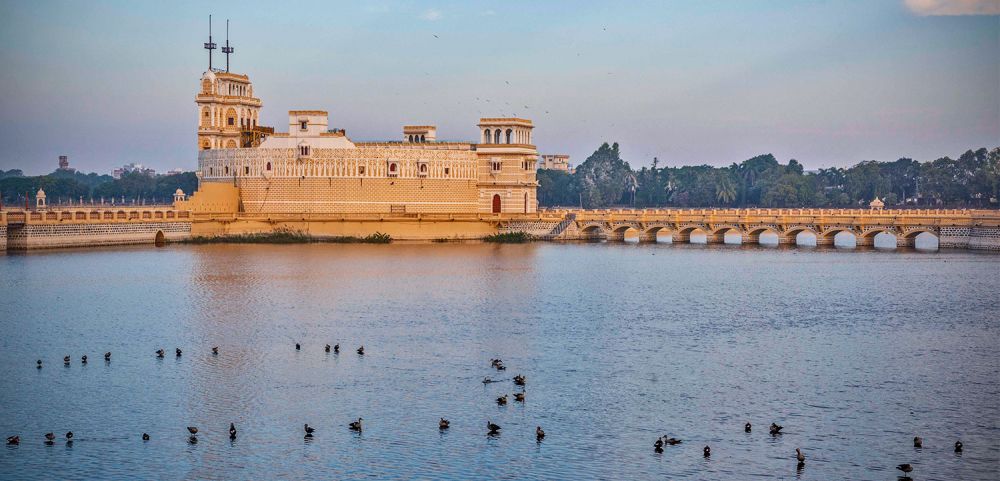

Located on the western coast of India in the state of Gujarat, Jamnagar is a city that has gradually emerged as a tourist destination. The city boasts a unique blend of stunning beaches, bird sanctuaries, colorful markets, and splendid architectural marvels. The history of tourism in Jamnagar is rich and varied, deeply intertwined with the city's cultural and historical heritage.
Founded in 1540 AD by Jam Rawal, the city of Jamnagar, originally known as Nawanagar (meaning new city), has been a hub of trade and culture for centuries. The construction of magnificent palaces and the establishment of public institutions during the rule of the royal family laid an early foundation for tourism.
The inception of the Marine National Park in the Gulf of Kutch in 1980, India's first marine park, marked a turning point for Jamnagar's tourism. The park's diverse marine life, including corals, mangroves, various species of birds, and sea creatures, began attracting nature enthusiasts and researchers from around the globe.
Jamnagar is also renowned for its historical temples and palaces. The Bala Hanuman Temple, famous for its continuous chanting of Ramdhun since 1964 and mentioned in the Guinness Book of World Records, has long been a site of pilgrimage and interest for tourists. The Ranjit Sagar Dam, Lakhota Palace, and Ratan Bai Masjid further add to Jamnagar’s historical allure, contributing to its growing tourism sector.
Government initiatives to promote tourism in Gujarat, coupled with Jamnagar’s existing historical and natural attractions, have helped in enhancing the city's tourism profile. The 'Khushboo Gujarat Ki' campaign by Gujarat Tourism, featuring iconic Bollywood actor Amitabh Bachchan, has significantly helped in bringing Jamnagar and its attractions to the national limelight.
In recent years, ecotourism and heritage tourism have become increasingly popular in Jamnagar, with tourists seeking authentic experiences. The city's rich biodiversity, traditional handicrafts, and Bandhani tie-dye art forms are particularly attractive. Additionally, the government's push for sustainable tourism practices is ensuring that the beauty of Jamnagar is preserved for future generations.
Jamnagar's journey as a tourist destination continues to evolve with a balanced mix of conservation and development. Its historical monuments, marine sanctuaries, and exquisite craftsmanship continue to captivate tourists. With a focus on sustainable development and awareness, Jamnagar is set to grow further as a hub for both domestic and international tourism.